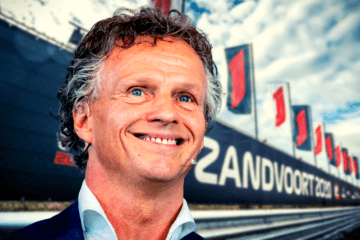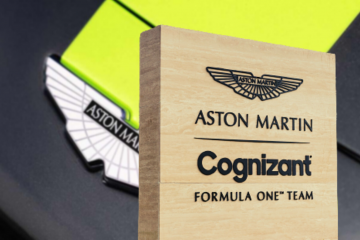Ayrton Senna: 24 Things You Didn’t Know About the F1 Legend
On May 1st, 1994, Ayrton Senna died.
His violent impact at Tamburello — a now-infamous corner at the Autodromo Enzo e Dino Ferrari racing circuit in Imola, Italy — sent a shock through the world. In Senna’s native Brazil, and in the motorsport community at large, that jolt never ceased reverberating. He was a controversial figure in life, a demigod in death, a philosopher out of the car, and behind the wheel, he was a towering figure unlike most sports have ever known.
These are just 24 things you didn’t know about the legendary Ayrton Senna da Silva: 1988, 1990, and 1991 Formula One world champion.
1. The rain-soaked 1984 Monaco Grand Prix was Senna’s debutante ball
The Monaco Grand Prix is among the most challenging races for drivers. That counts double for rookies, and the degree of difficulty goes up exponentially in the rain. In Senna’s rookie season, a downpour turned the streets of the principality into one large wall-encased puddle. While multiple world champions spun or hit the wall, the young Brazilian drove an inferior car with astonishing quickness.
He was catching his soon-to-be rival (and eventual quadruple world champion) Alain Prost by several seconds a lap when Prost stopped his car on track, protesting to the officials that the rain was simply too intense to carry on.
2. Amazingly, Senna wasn’t the fastest driver on that day
Most people forget that another driver, Stefan Bellof, was right behind Senna every step of the way, slicing through traffic with him. At times he was actually the faster driver, though he was ultimately disqualified from the race.
3. He’s still the unmatched master of Monaco
He won the race six times — only two men besides him ever won five. Not only that, he won five in a row from 1989 — a streak he still held when he died. Beyond that, he retired from the lead with a blown engine after securing pole position in 1985, famously crashed with an absolutely huge lead in 1988, and of course was a controversial finish away from winning the 1984 race. His worst finishing position was third. That’s dominance.
4. He could beat you at chess
He used to play chess with legendary team owner and master strategist Sir Frank Williams — even when he drove for rival teams — and according to Sir Frank, he would, “plan three moves and four counter moves ahead.”
5. His driving techniques were the stuff of urban legend
In Monaco, on the sharpest lefthand corner, you have to turn your steering wheel as far as possible and cross your hands in the process. According to McLaren, Senna would then downshift using his left hand, then straighten out the car and carry on. Some say it’s urban legend, while some believe it. Judge for yourself at the 46-second point, here.
6. He took being passed as a personal offense — even if he won
Towards the end of the 1993 Japanese Grand Prix, Senna was well out in front and working his way through lapped traffic, when a young Eddie Irvine, making his first-ever F1 start, dared to un-lap himself — twice. Needless to say, it didn’t go down well. Accounts vary on the severity of the confrontation after the race, but suffice it to say it involved three things: Senna’s fist, Irvine’s face, and the floor.
7. He was arguably the deepest thinker in the history of sport
Senna’s philosophical outlook is worthy of an entire book of study. He described driving in metaphysical terms, and its pursuit as a spiritual endeavor: “On a given day, a given circumstance, you think you have a limit. And you then go for this limit and you touch this limit, and you think, ‘OK, this is the limit.’ And so you touch this limit, something happens, and you suddenly can go a little bit further. With your mind power, your determination, your instinct, and the experience as well, you can fly very high. […] And suddenly I realized that I was no longer driving the car consciously. I was driving it by a kind of instinct, only I was in a different dimension.”
8. Senna predicted someone would die in the exact place where he did
Ayrton went with his fellow driver and eventual teammate, Gerhard Berger, to see what could be done in the name of safety at Imola’s Tamburello corner, after Berger and several others had been involved in serious crashes there. Together, they climbed through a partition in the retaining wall to investigate the surroundings. Senna wanted to move the retaining wall back, but the Santerno River prevented doing so. Senna told Berger that he feared someone would die in that spot. Five years later, his words proved eerily prescient.
9. Senna helped make the Acura NSX a great car
While Honda was designing the original NSX, it also had a highly successful partnership with Senna and McLaren, so Senna spent a lot of time in Japan, driving and giving feedback to help the engineers refine the car.
10. He won the 1991 Brazilian GP without shifting
Towards the end of the race, his transmission started failing, and he lost third, fourth, and eventually fifth gear. He drove lap after lap stuck in sixth, and through sheer willpower managed to get the car around the course just fast enough that no one caught him. After he won, he was so exhausted he had to be helped from the car, while the whole of Brazil nominated him for canonization.
11. Senna’s first lap at the 1993 European Grand Prix might be the greatest lap in history
The European Grand Prix at England’s Donington Park started under damp conditions. Senna seemingly drove like it was dry, and schooled past and future world champions like Alain Prost, Michael Schumacher, and Damon Hill like they were amateurs, passing them all before even finishing the first lap.
12. Audi builds cars in Brazil because of Senna
Shortly before his death, Ayrton went to Audi HQ in Ingolstadt, Germany and signed a contract to begin importing the A3. In the years that followed, Audi Senna Ltda. built a factory to make the A3, as well as the VW Golf. The factory’s still going strong, but is now 100% owned by Audi.
13. He saved the life of a fellow driver, Erik Comas
The Frenchman had crashed very heavily and was knocked unconscious. Senna was the only driver to stop. He ran from his car in front of (very high-speed) traffic, shut off Comas’ engine so it wouldn’t catch fire, then held his head to stabilize his neck until the paramedics could arrive.
14. Multiple drivers owe their lives to Senna’s legacy
The push to make F1 a safer sport in the wake of Senna’s death was massive — and never ended. As recently as Fernando Alonso at the 2016 Australian Grand Prix, but scattered every so often through the past two decades, evidence of the progress comes to light as drivers walk away with minor injuries from incidents that would have meant certain death in a previous era. In fact, only one F1 driver has died as a result of crashing in a race since Senna.*
*A second driver, Maria de Villota, also passed away from what was believed to be complications from her injuries during a testing crash, but she had made a recovery and a return to working life prior to her death.
15. At the time of his crash, he had an Austrian flag in his car
He often flew a Brazilian flag after a race, during his victory lap. On that dark Sunday, his plan was to win, then wave an Austrian flag in memory of Roland Ratzenberger, a young Austrian who died in a crash during qualifying just one day before.
16. Senna’s funeral was among the largest in history
National days of mourning were declared across Brazil. Millions lined up to walk past his closed coffin, and millions more lined the streets for his funeral procession. Quite simply, Ayrton Senna was more beloved than Pele.
17. But the FIA president at the time skipped it
Max Mosley’s rationale was that since everyone was in Brazil burying Ayrton, if he didn’t go to Roland Ratzenberger’s funeral, no one would. He wasn’t wrong.
18. Every Williams F1 car still carries a Senna tribute
Since the moment he died, every single F1 car Williams has produced has had Senna’s face or logo on it in remembrance.
19. His young nephew was banned from racing for years
Ayrton’s sister Viviane made her son, whom Ayrton described as a better driver than himself, give up racing after her brother died. Many years later, Bruno Senna started racing again, and even made it briefly to F1 — on his uncle’s Williams F1 team, no less. Without all that time away, the sky could have been the limit for him.
20. Honda resurrected Senna’s ghost. Really.
As the home track for Honda, the Suzuka Circuit was kind of Senna’s personal playground while he helped develop the NSX. It was just one of many tracks he mastered, but Honda’s tribute was nevertheless brilliant.
21. He made peace with his arch nemesis just before his death
Alain Prost and Ayrton Senna got along about as well as a cat and a dog. They both won a world championship at the other’s expense by crashing. Each other. Prost even had a clause in his Williams contract that expressly prohibited the team from signing Senna as his teammate. They only began to speak after Prost retired. In the wake of Ratzenberger’s crash, the evening before his date with Tamburello, Senna reached out to Prost, to discuss how to make the sport safer in the future.
22. His friendship with one-time teammate Gerhard Berger ran deep
They used to prank each other, with Berger placing a phallic photo in Senna’s passport, and Senna gluing Berger’s cards in his wallet, but it was more than just games. A distraught Berger pointed out that the lead pallbearers were slated to be Prost and Sir Jackie Stewart — with whom Senna also famously clashed — leading to a complete shuffling of the pallbearer order literally minutes before the funeral. Years later, Berger acted as an advisor, guiding young Bruno in his F1 ambitions.
23. He donated millions to charity
He was worth a ton — not too far off of half a billion dollars — but he kept most of his charitable work hidden from the public eye until after his death. Today, Instituto Ayrton Senna exists to help prepare children for the future, through education.
24. He remains, hopefully forever, the only F1 world champion to die during an F1 race
Jochen Rindt eventually became a world champion posthumously, while Alberto Ascari, Jim Clark, and Denny Hulme all perished in non-F1 races and tests.
Source: thrillist.com


